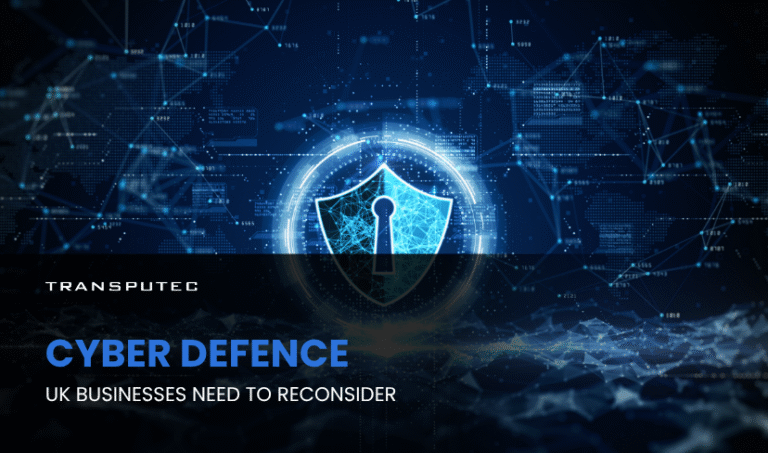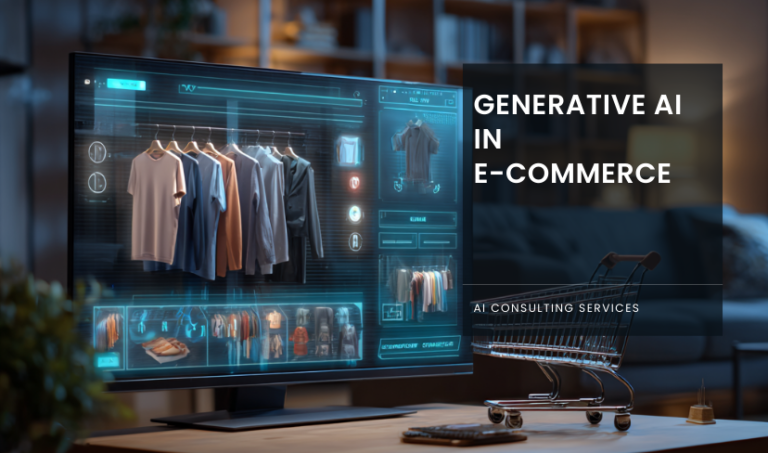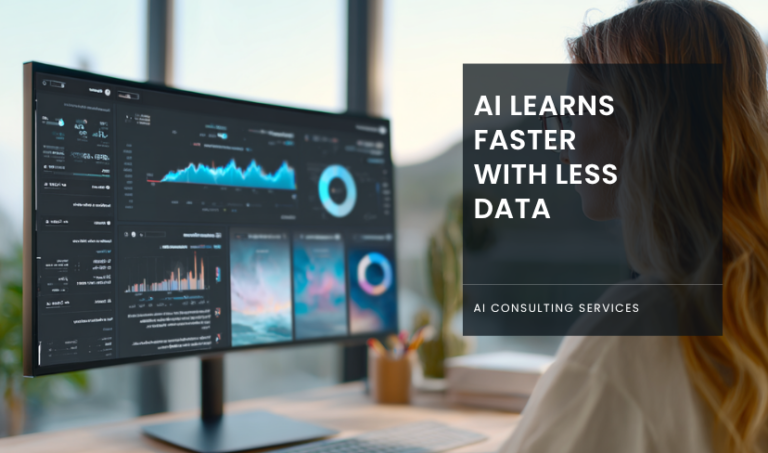Written by KRITIKA SINHA | MARKETING
Deadlines tightening overnight, confidential files slipping into unsecured channels, employees unknowingly relying on AI-generated misinformation—these are not hypothetical scenarios. They are real challenges businesses face as Generative AI tools become part of daily workflows. While the technology can streamline content creation, automate processes, and reduce manual workloads, it can also introduce unseen liabilities if used without clear safeguards.
This blog unpacks how Generative AI can become a double-edged sword in the workplace, examines the less obvious risks, and provides practical steps to protect both your data and your business reputation. Drawing on industry research, real-world case examples, and Transputec’s operational experience, we will help you understand how to keep the benefits while limiting the dangers.
Understanding the Risks of Generative AI in the Workplace
Generative AI, programmes that create text, images, code, and other media based on prompts, has grown rapidly in adoption. In 2023 alone, 37% of organisations globally reported integrating generative AI into at least one business process (McKinsey, 2023). However, without structured governance, companies risk exposure in several areas:
Data Privacy Violations – Sensitive information can be unintentionally shared if employees feed proprietary data into public AI tools.
Misinformation and Hallucinations – AI models sometimes produce incorrect or fabricated information, which, if unverified, can mislead internal teams or clients.
Intellectual Property (IP) Risks – AI-generated content may inadvertently replicate copyrighted materials from its training data.
Bias and Discrimination – Bias in training data can influence AI outputs, leading to reputational damage or legal consequences.
The concern is not that generative AI is inherently unsafe, but that its misuse, whether intentional or accidental, can create vulnerabilities that traditional IT risk controls might overlook.
Generative AI Risks Inside a Modern Business
1. Generative AI and Data Leaks: An Overlooked Liability
A common misunderstanding is that generative AI models behave like traditional software. In reality, when business users input sensitive data into consumer-grade tools, it can become part of the model’s training data—creating severe confidentiality risks. Malicious prompt injections and adversarial attacks can also coerce AI models to reveal unintended, sometimes highly sensitive information.
Key Facts:
Information leakage is a top generative AI risk, especially when public or unsecured AI tools are used for internal business needs.
Unintended outputs may include factual inaccuracies, company secrets, or even copyright-infringing material.
2. The Hidden Risk of Generative AI Bias and Inconsistent Output
Generative AI models reflect biases present in their vast training data. Whether it’s recruitment decisions or automated content, biased output can have legal and reputational fallout. Worse, repeated prompts may deliver inconsistent results—unacceptable in compliance-heavy industries.
Key Facts:
Studies show generative AI compounds bias if not actively managed, amplifying issues related to gender, ethnicity, or politics.
AI-assisted outputs must always be reviewed on a risk-assessed basis to guard against bias-driven mistakes.
3. Generative AI and Employee Accountability
Many employees now use generative AI to speed up daily work, raising questions: who’s accountable when the AI makes a mistake? Automation can produce impressive output at scale, but if unchecked, it risks spreading errors across hundreds of documents or campaigns.
77% of business leaders plan to implement generative AI for customer service tasks, but a lack of clear policies adds operational risk.
Without strong governance, businesses are exposed to regulatory breaches, wasted resources, or damaged trust.
Ready to Explore AI for Your Business?
Connect with us today for our free consultation!
Practical Strategies: Mitigating Generative AI Risks
1. Set Clear Usage Policies
Without defined rules, employees may unknowingly put your organisation at risk. A good AI usage policy should:
- Specify approved AI tools.
- Prohibit the entry of confidential, personal, or regulated data into public AI systems.
- Define acceptable use cases for AI, such as summarising public documents or drafting non-sensitive content.
- Include consequences for misuse.
Example: A financial services firm restricts employees from using public AI tools for client account analysis, instead mandating internal, secured AI platforms.
2. Implement Human Oversight
AI can be fast but not always accurate. A “human-in-the-loop” process ensures errors are caught before they cause damage.
Assign subject matter experts to verify outputs.
Require fact-checking for AI-generated reports, marketing materials, or code.
Build checkpoints into workflows so AI-generated work cannot be published or deployed without review.
Example: A marketing team uses AI to draft campaign copy but routes every piece through an editor for compliance and brand tone verification.
3. Use Secure AI Platforms
Security starts with choosing the right tools.
- Opt for private AI deployments on company-controlled servers.
- Ensure encryption is used for data in transit and at rest.
- Avoid AI services that retain prompts for model training unless explicit consent is given.
Example: A law firm deploys an on-premise Generative AI model for document summarisation, ensuring no client information leaves its internal network.
4. Train Employees on AI Limitations
Awareness is one of the most effective risk mitigators.
- Educate staff on how Generative AI produces outputs and why it can “hallucinate” or fabricate facts.
- Share real examples of incorrect AI outputs.
- Provide prompt-writing best practices to avoid vague or risky instructions.
Example: An HR department holds quarterly AI safety training sessions, showing employees examples of AI-generated resumes with fabricated qualifications.
5. Regularly Audit AI Outputs
Even with good practices, ongoing verification is essential.
- Conduct periodic audits for accuracy, bias, and compliance.
- Use independent review teams or automated quality checks.
- Document findings to improve AI governance.
Example: A software company runs a monthly review of AI-generated code snippets, checking for security vulnerabilities and licensing conflicts.
Why Transputec? Generative AI Risk Mitigation Designed for Business
Transputec’s AI solutions are engineered with business risk front and centre:
Custom Generative AI Integration: Transputec tailors generative AI models to fit your compliance, security, and workflow needs.
Enhanced Security and Real-Time Monitoring: AI-driven monitoring detects anomalies, prevents data leaks, and helps ensure data stays private.
Comprehensive Governance: End-to-end support—from consultation and strategy through deployment, training, and optimisation—ensures policies are practical and enforced.
Ongoing Compliance Updates: As regulations shift, so do Transputec’s AI policies and systems—keeping you confidently ahead.
Scalable Solutions: Whether for a fast-growing SME or global enterprise, Transputec provides AI risk mitigation that evolves with your needs.
How Transputec’s AI for Business Helps?
Transputec has spent decades working with real-world organisations dealing with fragmented systems and unreliable data. Their approach to AI for Business is hands-on, outcome-focused, and tailored for operational decision-makers.
What Transputec Does Differently:
System Audits and Data Mapping
Transputec starts by mapping your current systems, showing exactly where breakdowns occur and what the data quality looks like.Custom AI Models Built on Your Data
Off-the-shelf AI doesn’t work for every business. Transputec trains models based on your processes, terms, and objectives.Minimal Disruption
AI is layered onto your existing systems rather than replacing them. This avoids downtime or expensive re-platforming.Ongoing Monitoring and Alerts
After implementation, Transputec sets up dashboards and alerts to keep your data clean and operations on track.
Conclusion
Generative AI has the potential to be a valuable productivity tool, but unmanaged adoption can expose your organisation to security breaches, compliance issues, and reputational harm. By recognising the hidden risks, implementing clear policies, training staff, and partnering with experienced technology providers, you can minimise these threats while maximising AI’s benefits.
Contact us to connect with an AI expert and get started with Transputec.

Ready to Transform Your Business with AI?
Connect with an expert and get started on the next generation of IT support.
FAQs
1. What risks does Generative AI pose to businesses?
Generative AI can create data privacy issues, introduce misinformation, and replicate copyrighted material. Without safeguards, it can also perpetuate bias or be misused in ways that harm business operations.
2. How can Transputec help my company use Generative AI safely?
Transputec conducts AI risk assessments, implements secure AI systems, trains employees, and monitors outputs to ensure compliance and accuracy.
3. Is Generative AI suitable for all types of businesses?
Yes, but the level of adoption and the safeguards required vary by industry. Transputec tailors AI integration plans based on your operational needs and regulatory obligations.
4. Can Transputec provide private AI tools for internal use?
Yes. Transputec can deploy on-premise or private cloud AI systems, ensuring sensitive company data never leaves your controlled environment.
5. How do I start working with Transputec on Generative AI?
Contact Transputec to schedule an AI readiness consultation. We will assess your current systems, identify risks, and recommend safe implementation strategies.




